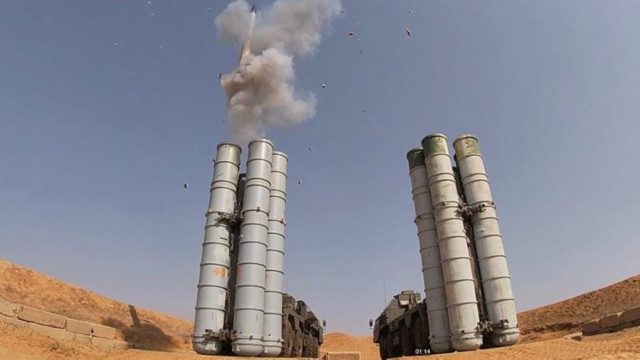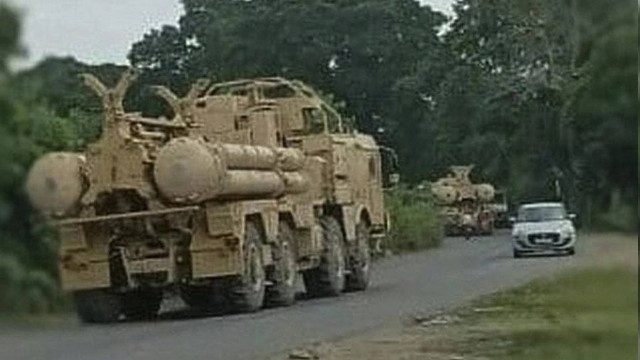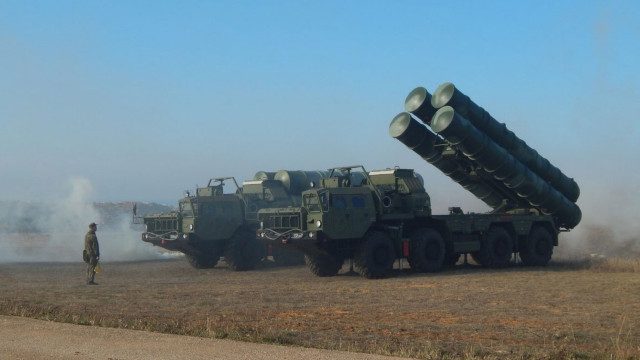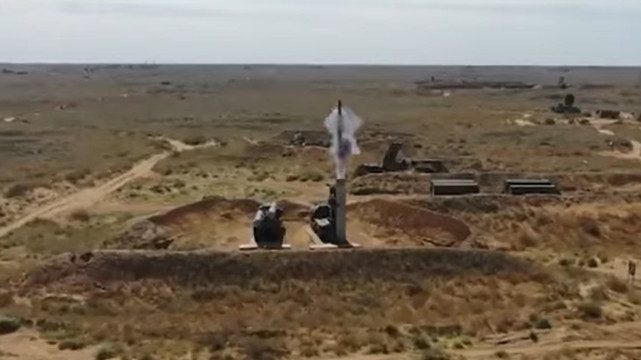𝙍𝙪𝙨𝙨𝙞𝙖𝙣 𝙏𝙧𝙞𝙪𝙢𝙥𝙝 𝙖𝙞𝙧 𝙙𝙚𝙛𝙚𝙣𝙨𝙚 𝙥𝙧𝙤𝙙𝙪𝙘𝙩𝙞𝙤𝙣 𝙛𝙖𝙘𝙚𝙨 𝙖 𝙩𝙬𝙤-𝙮𝙚𝙖𝙧 𝙙𝙚𝙡𝙖𝙮
Reports from Indian sources indicate that Russia won’t be able to deliver the two SA-21 Growler anti-aircraft missile systems as planned in 2024. Instead, the last pair of this missile defense system, also known as the S-400 Triumph, will be delivered to India in the third quarter of 2026 – between July and September. The current conflict between Russia and Ukraine seems to be the source of the production delay, although Moscow has yet to comment on these claims.

The last update about India’s remaining two S-400 units came in October of the previous year. Several intriguing photos surfaced on Russian Telegram accounts around the same time, showing the transit of two 51P6A launchers, essential components of the S-400 missile setup. The launchers displayed in the photographs are designed to launch 9M96E rockets.
The photographer speculated that the S-400 systems in the images might be the final two that India ordered, scheduled for completion by the end of 2024. According to the photographer, the captured S-400s in Russia were moving towards the final phase of manufacturing – assembly. Once assembled and passed the necessary quality tests, these systems are expected to be shipped to India.
 Photo credit: Telegram
Photo credit: Telegram
What’s noteworthy in the photos is the striking appearance of the systems’ camouflage. It significantly deviates from traditional Russian camouflage patterns, resembling the desert hues similar to those used by Indian missile forces. However, there has been no official verification of these claims from either India or Russia as of yet.
Indian S-400
Just to rewind, back in October 2018, India signed a deal to acquire Russian S-400 systems, marking a significant stride in defense collaboration between the two nations. The order consisted of five units of the powerful S-400 Triumf anti-missile systems, renowned for their capabilities in countering airstrikes, including those from ballistic missiles and stealth aircraft.
 Photo credit: DefBrief
Photo credit: DefBrief
Financially, the agreement held high stakes – India agreed to a deal worth US$5.43 billion with Russia. This hefty investment served to underscore India’s commitment to amplifying its defense potential and upholding its strategic alliance with Russia.
Despite this, India’s ambition isn’t solely pinned upon Russian air defense systems. India has been pioneering a “Made in India” initiative for years that emphasizes manufacturing weapon systems domestically, primarily using indigenous resources. Sources suggest that India is currently working on a new system to replace the S-400, which is anticipated to be operational within a few years. This proposed indigenous air defense system will feature three distinct types of missiles, tailor-made to neutralize enemy targets across varying distances, with the furthest strike potential being nearly 400 kilometers.
Some “unexpected” benefits
 Photo credit: Russian MoD
Photo credit: Russian MoD
The postponement of the final pair of S-400 Triumf to India marks a significant snafu in the nation’s defense architecture, which primarily relies on the triumvirate of S-400 systems already deployed. The anticipated delivery of the fourth and fifth units has unfortunately thrown a wrench into India’s defensive tactics. As a quick reminder, this marks the second delay of the final two S-400s. Initially, the fourth S-400 unit was slated for a 2023 arrival. The date was then pushed back to 2024, and now the last two units [fourth and fifth] are scheduled for 2026.
Delving deeper into this predicament could potentially unexpectedly benefit the Indian industry. As things stand, India is banking on the partnership and procurement of components for several platforms, including Mi-17 choppers, MiG-29, and Su-30 SMI fighter jets, as well as An-32, L-76, and Il-78 aircraft. However, due to the ongoing war and a myriad of production constraints within India, it is uncertain when these much-needed parts will be available.
With this in mind, the authorities in New Delhi are keenly aware of this issue. In recent years, India has not hesitated to point the finger at Russia for delays in parts and armament delivery. As recently as February 2023, New Delhi has decided to transfer nearly 600 critical parts, all utilized in Russian aviation systems.
It appears that the silver lining in this situation might be realized through the adoption of Transfer of Technology [ToT]. In this way, India could turn a potentially negative situation into a beneficial one while providing significant support to Russia. Specifically, the forecasted holdup in S-400 delivery over the next couple of years might offer the opportunity India has been awaiting – a pronounced technology transfer from Moscow, enabling the domestic assembly of subsystem and component parts.
Similar rumors circulated back in 2018, though under a different political climate. Back then, assertions of India needing not just five, but up to ten S-400s were prevalent. Should India place an additional order, Russia might find itself in a tight spot, unable to meet the demand. As a result, Russia may need to export much of its production to India, which adheres to Soviet military design-compatible military standards.
In answer to India’s claims back in 2019, Rostech’s CEO, Sergey Chemezov, hinted that the S-400 could spark domestic [Indian] production. “Yes, we are discussing localization [of S-400 production] with India as well,” Chemezov told broadcaster RBK. Consequently, a failure in delivery could potentially induce a collaboration, much to Washington’s dismay.
S-400 Triumph
As for the S-400 and its specifications, Russia proudly states that the S-400 Triumf [Triumph] is its leading air defense system. This highly efficient network, the brainchild of Russia’s very own Almaz Central Design Bureau, comprises a command center, target detection radar, and missile launchers. The radar can identify targets up to 600 kilometers away, while its missiles can neutralize threats located 400 kilometers distant. With the capability to counter 36 targets simultaneously, the system is adequately armed with defensive prowess.
To cover its wide range, the S-400 utilizes an assortment of four missiles, each with its unique size and technical prowess. This diversity extends from the long-range missile 40N6 [400 km] to the short-range missile 9M96E2 [120 km], each optimized for specific targets and engagement scenarios.
 Video screenshot
Video screenshot
The S-400 operates in a three-stage process which includes target detection, tracking, and missile interception. The radar first identifies the target and funnels the data to the command center. The command center processes the information, and if a threat is identified, a missile is fired immediately.
The dimensions of the S-400 fluctuate based on its respective components. For instance, the missile tubes measure roughly 7.5 meters, while the radar vehicles can span over 10 meters. The system’s flexibility enables it to be adapted to diverse terrains and conditions, providing versatile protection.
With a strong portfolio of advanced capabilities, it’s no wonder the S-400 is considered one of the most sophisticated air defense systems in the world. Its brilliant features, coupled with operational flexibility, make it an invaluable component of modern air defense.